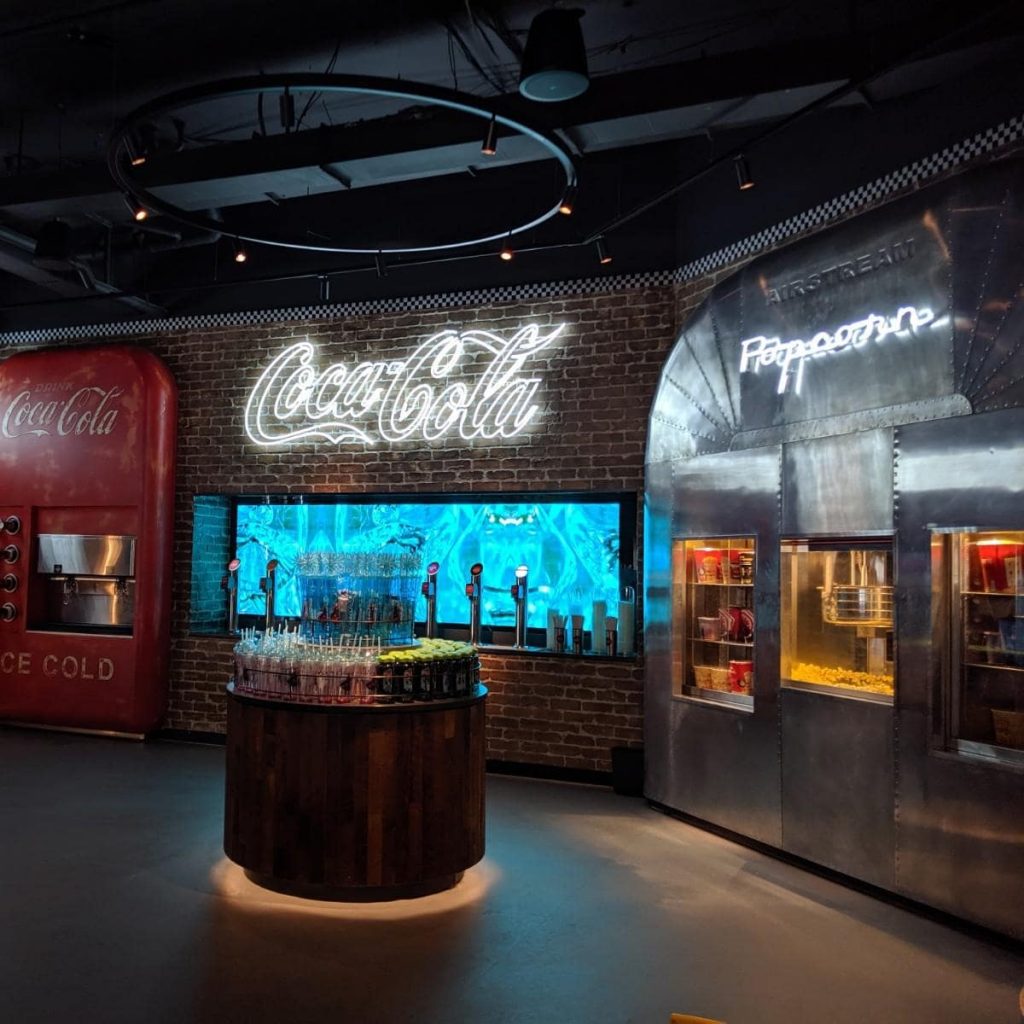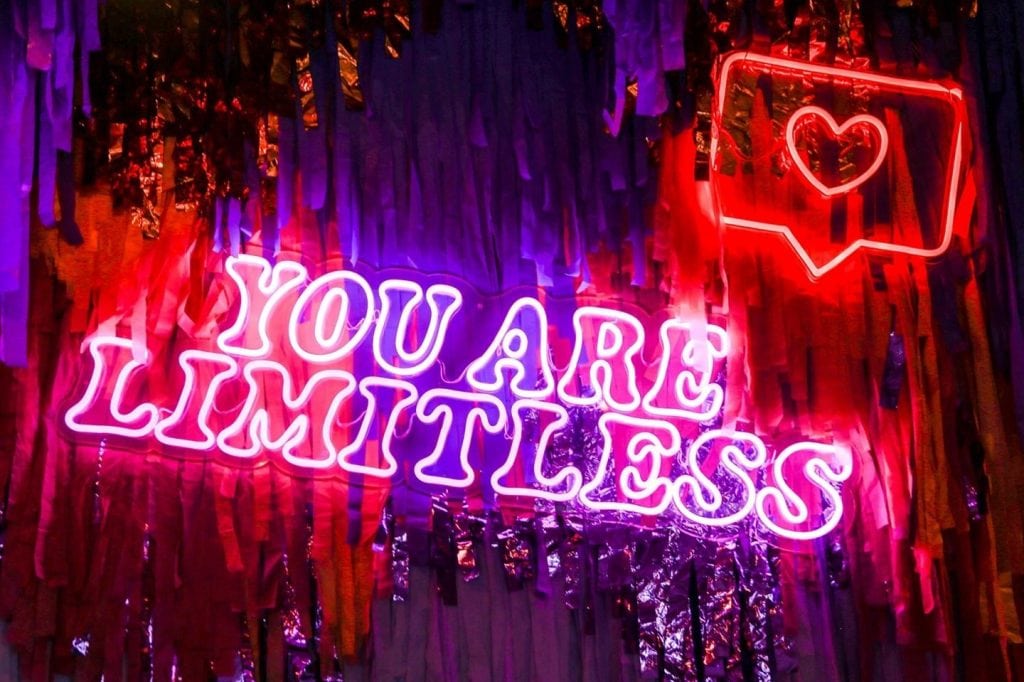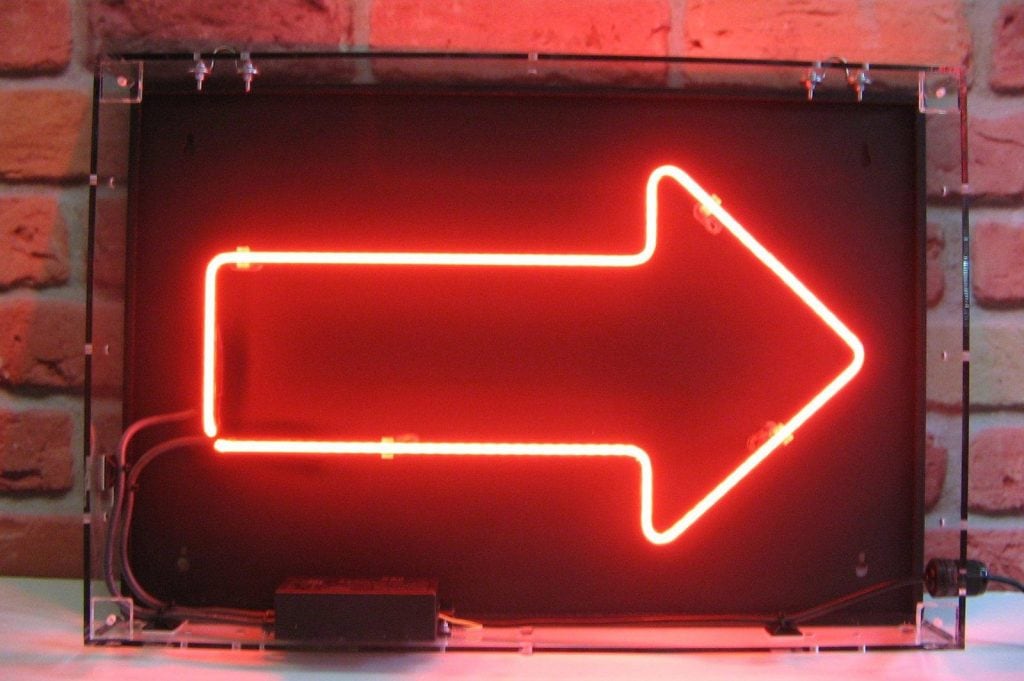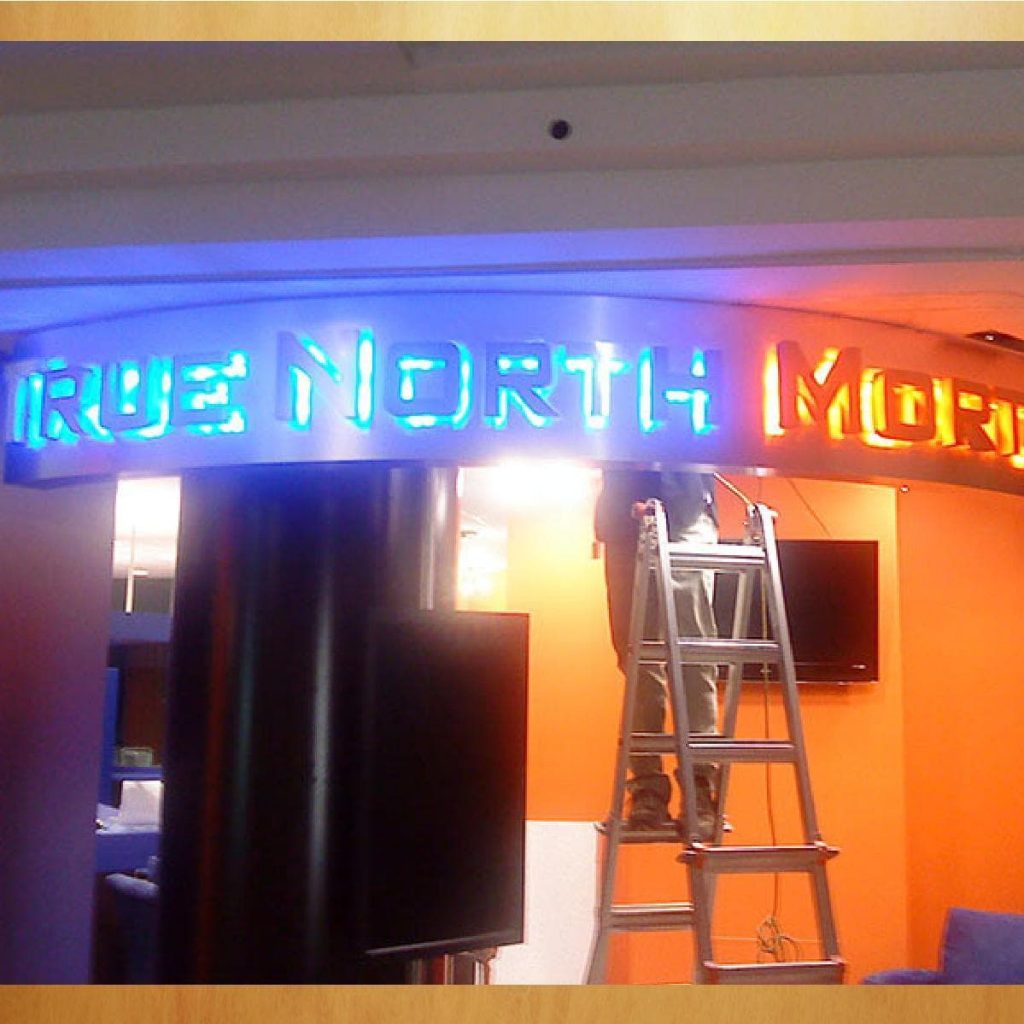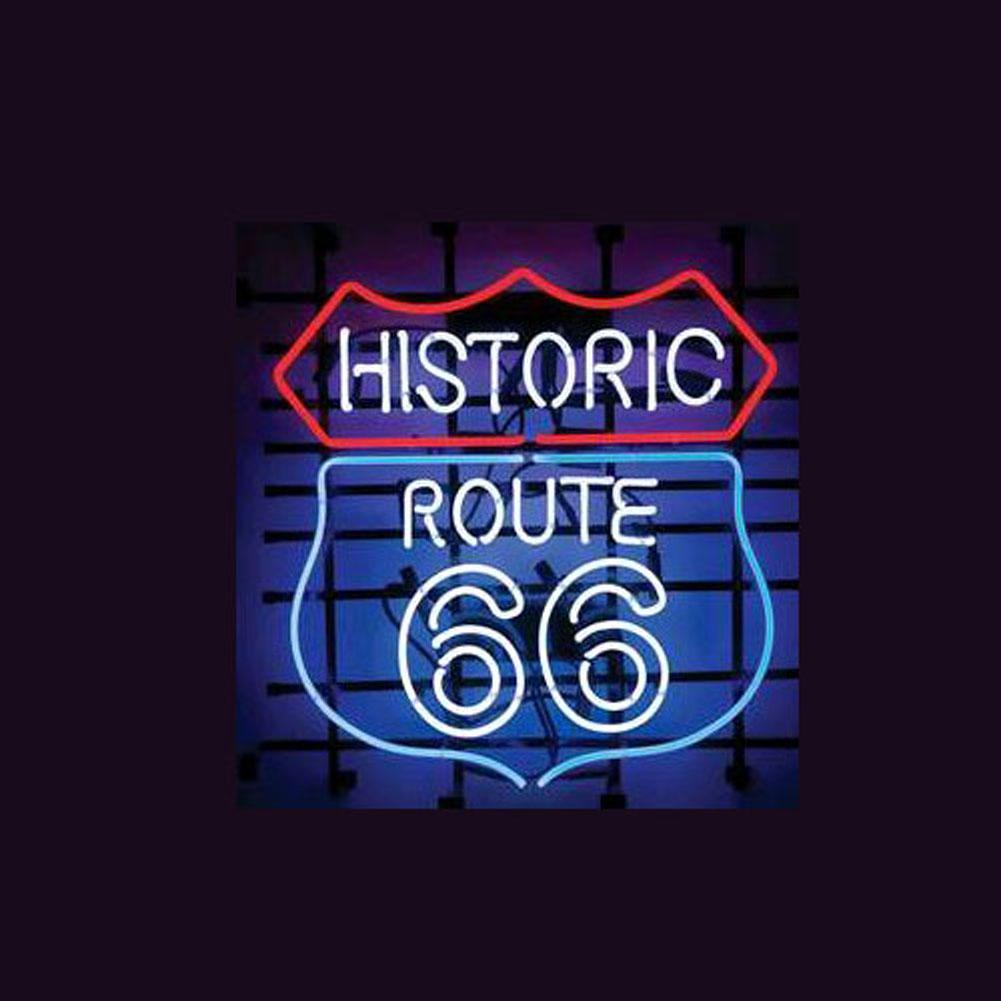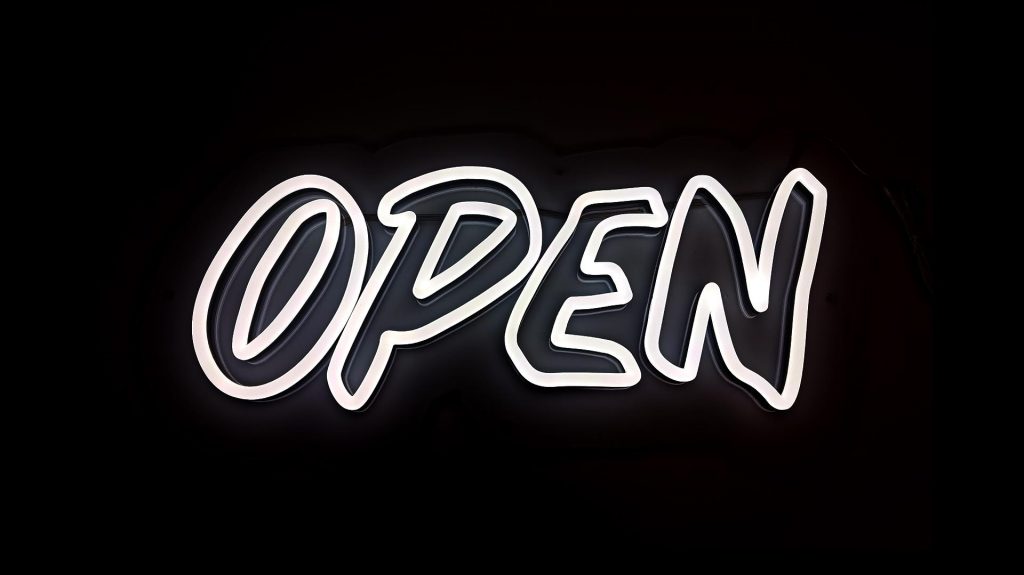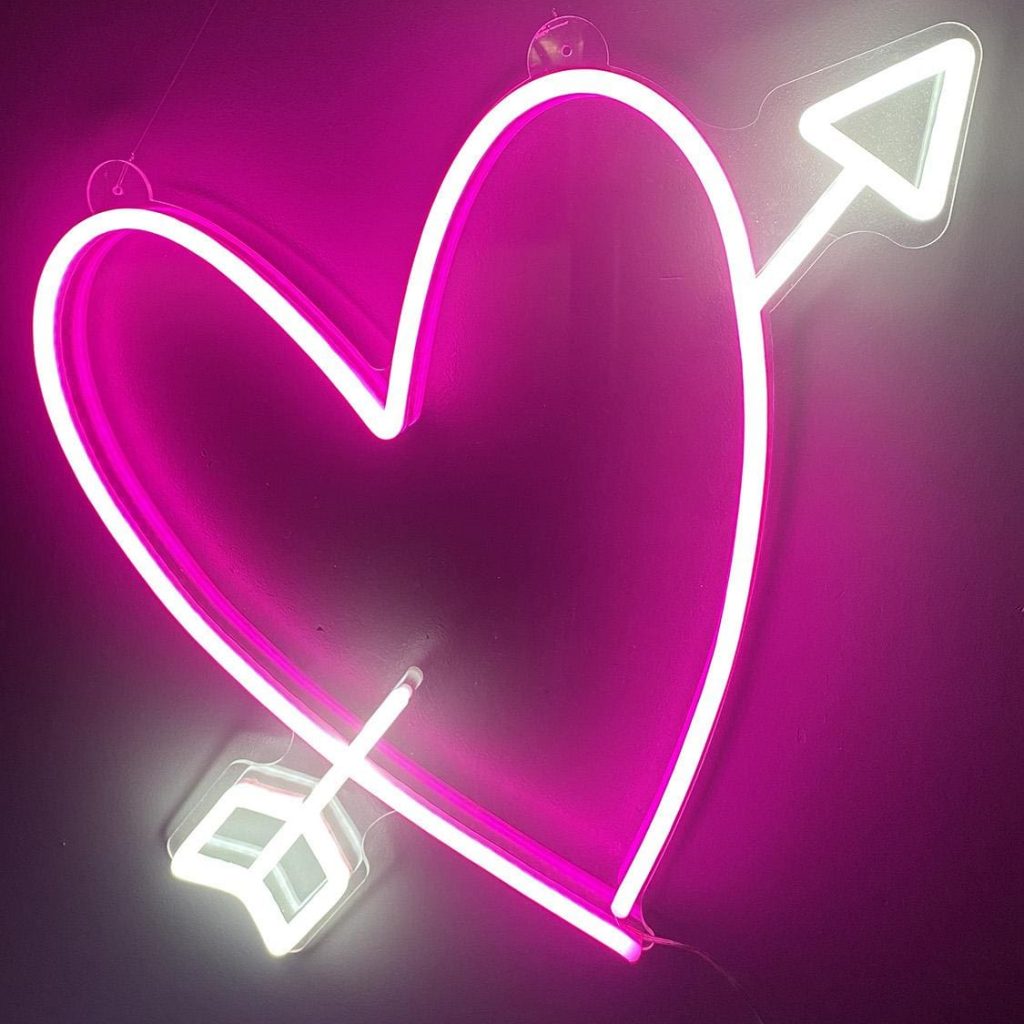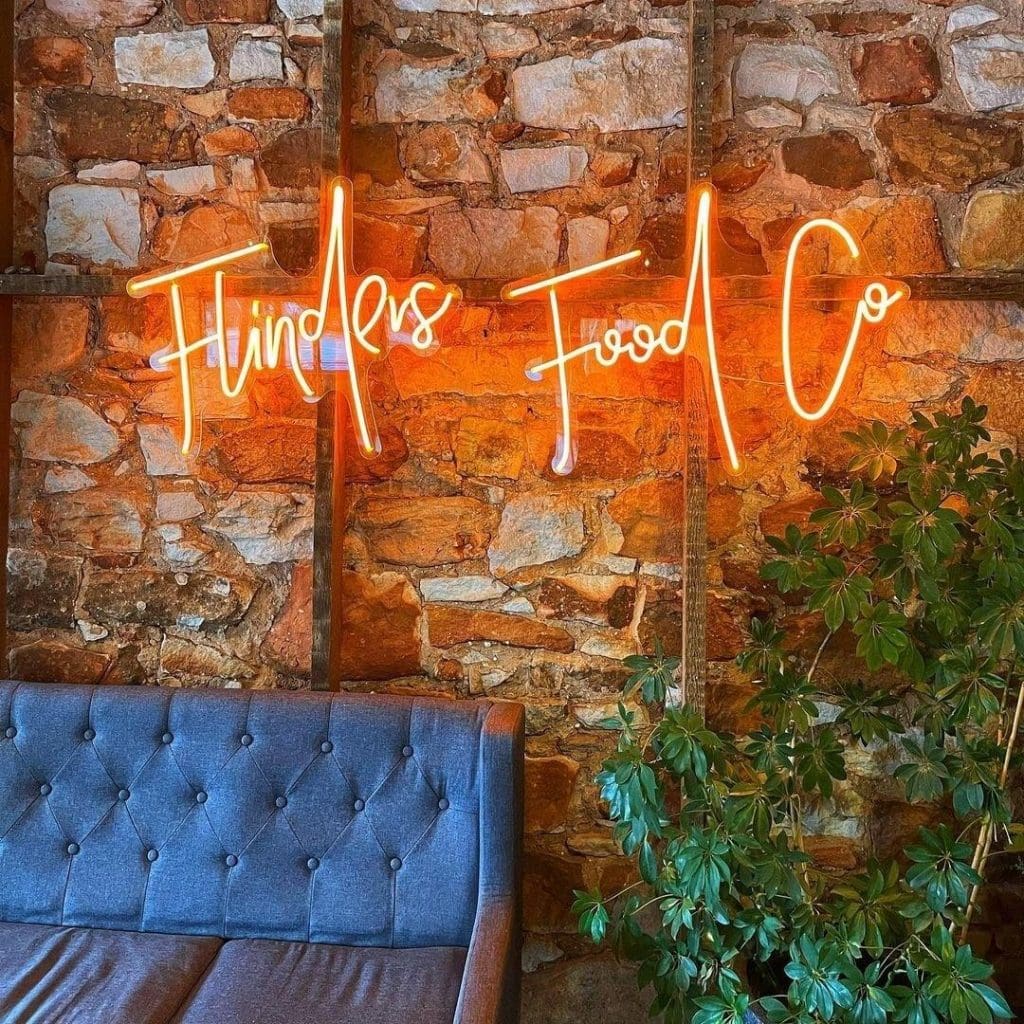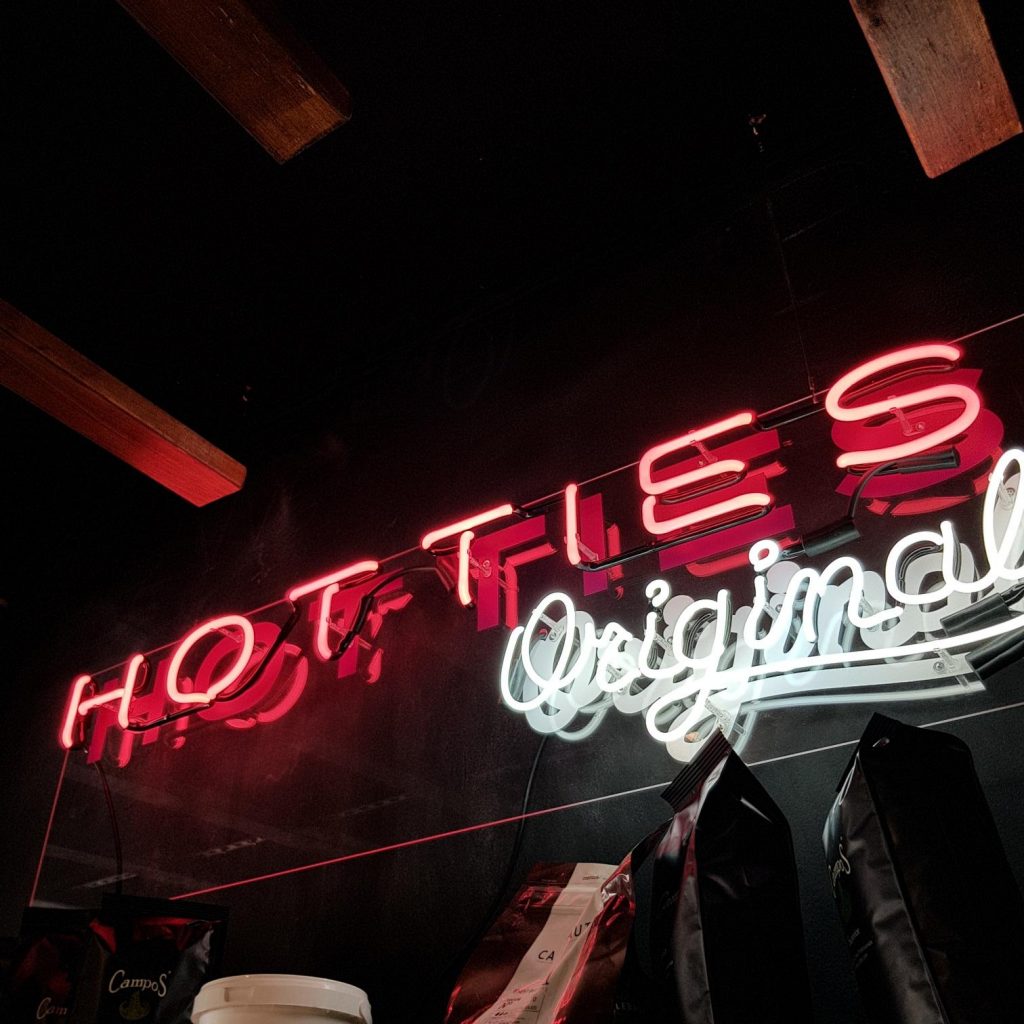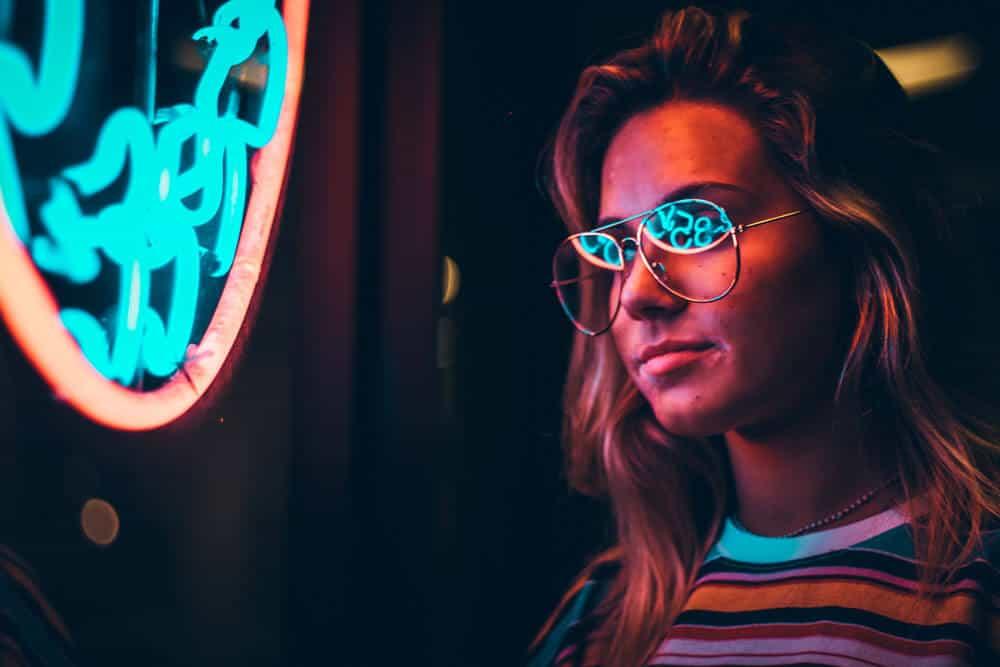Although neon lights have always been around for quite some time, they have only recently begun to play a significant role in the aesthetics of urban streets.
No longer just a novelty found in arcades and nightclubs, neon signs are now a common component of contemporary architecture and a sought-after element in the design of private and public spaces alike.
Neon signs, which have been used since the early 20th century, have changed in style and colour to reflect the aesthetic preferences of urbanites in the West.
Neon sign technology has been available for centuries, however, neon signs have only been employed commercially during the last century. Neon signs are used as a decorative and bold type of advertising everywhere, from hipster cafes and bars to edgy retail stores. Let's take a deep dive into the past of neon signs and learn about their beginnings, evolution, and potential future.
What Are Neon Signs?
Neon lights are a type of artificial lighting that produce light by means of a gas which is both flammable and see-through. An ignitable gas was utilised to produce an red or orange glow in the earliest kinds of neon lighting.
Mixing red neon gas with clear liquids like ethanol and carbon dioxide can frequently result in the production of modern neon lights and modern garden fences. When these chemicals are mixed together, they produce a white light that is not only completely safe to use but also extremely bright.
The fields of architecture and interior design, as well as other areas of life, each make use of a variety of customized led sign types. These include neon logos, neon artwork, neon signs, neon clothes, and neon furniture. Neon can also be used in other contexts.
Transparent tubes are often what make up neon signs, and these tubes are affixed to the walls.
These signs have the capability of displaying an image or text that is able to be seen clearly from a considerable distance. On the other hand, neon logos are designs that are formed from a circular or different form. In order to attract attention to the owner of the business, these logos are typically placed on various articles of apparel and other products.
Who Made the First Neon Sign?
Before electricity was found, in the 1850s, scientist Julius Plücker with glass-blower Heinrich Geissler began developing the technology behind neon signs by creating illuminating glass tubes.
Using sealed glass tubing, they applied electrical currents to different gases and examined the resulting colours of light.
It wasn't until decades later that French engineer, scientist, and inventor Georges Claude created the first neon lamp. He showed the first ever neon lamp to the public in 1910 in Paris, and people were amazed by the innovation and fascinated by its striking originality.
Five years later, in 1923, Georges Claude brought the first neon gas signage to the United States, where his company soon established itself as the industry standard.
Historically, What Functions Did Neon Signs Serve?
When neon signs were first mass-produced in the 1920s, they quickly became a hit with advertisers, merchants, and consumers, and soon cities all across the United States and other parts of the world were aglow with neon.
All sorts of businesses, from automobile manufacturing to radio broadcasting, hotel and restaurant management, and everything in between, have enthusiastically adopted neon signs as a means of advertising themselves in a manner that is unique, arresting, and interesting. The iconic neon sign for Camel cigarettes, which blasted smoke rings out onto Broadway, is a significant example of the use of neon signs in advertising throughout history.
In a short amount of time, neon signs established themselves not just as icons of the entertainment industry, but also as harbingers of the promising future of the rising electronic age which was starting to spread throughout the world. The streets of major worldwide cities like London, Tokyo, and Las Vegas have become ideal examples of sites where neon lights have been prevalent.
Additionally, it was eventually revealed that animated neon graphics could also be brought to life by automatic switching between the on and off states of the neon light. Because of this, there was room for an even greater amount of originality and artistry in the designs of neon signs.
What Is the Purpose of Neon in Signs?
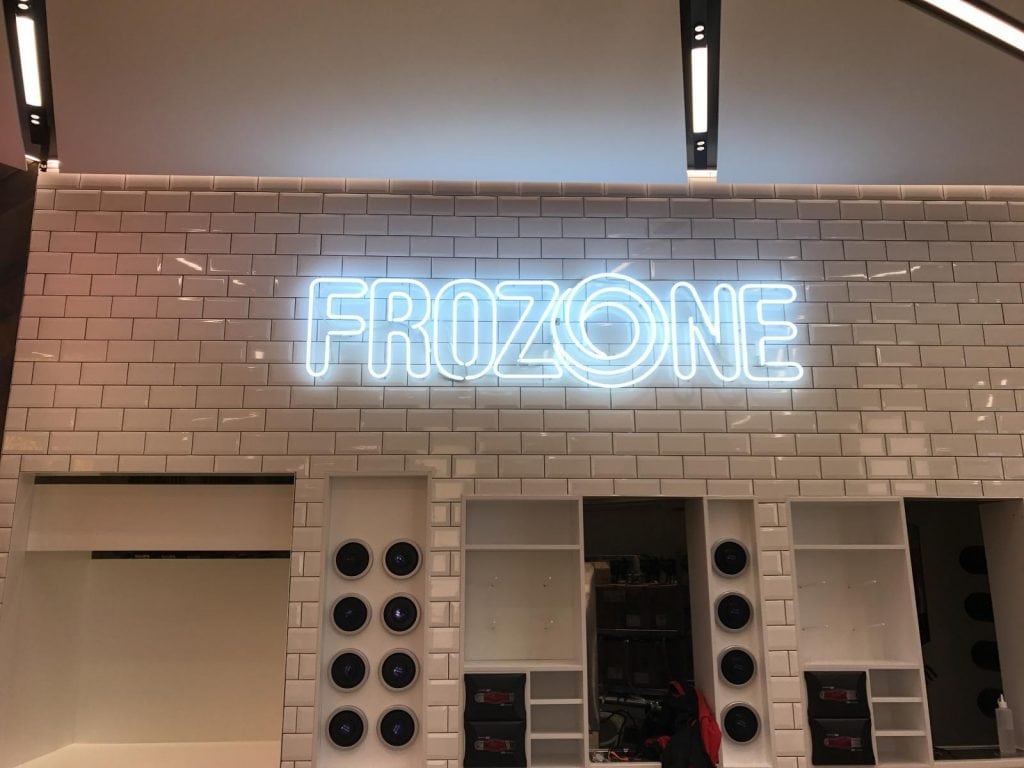
Neon gas is considered to be an "inert" gas, and only very little amounts of it are contained inside the glass tubes that make up neon lights. When an electric voltage is applied to the electrodes that are located at either end of the tubes, this voltage causes a free electron to speed up, providing it with the kinetic energy necessary to "ionise" the neon gas atoms, which result in the atoms becoming positively charged.
The entire combination of positive and negative symbols enables the electrical current to go through, and the result of this is the production of light that is visible to the human eye.
In fact, inert gases, often known as "noble" gases, such argon, helium, xenon, and krypton, can be used in neon signs in addition to the more common noble gases like neon and xenon. Neon and argon are the two gases that are typically combined the most frequently in order to produce a variety of coloured lights.
Phosphor coatings on the inside of the glass tubes are an alternate method that can be utilised to accomplish the goal of achieving a wider colour spectrum.
Neon gas by itself is what creates the signature red light that is characteristic of most people's mental image of neon signs. On the opposite hand, argon is utilised for the emission of a dazzlingly intense blue light. The two together produce a wide range of colours, including pinks, purples, greens, and yellows, among many more.
Are Neon Signs Harmful?
Due to the fact that it is frequently necessary to complete the work by hand, the process of making neon signs might be considered to be rather hazardous. The thin glass tubes that carry the gas need to be heated over a strong torch flame so that the maker may gently bend them into the needed shapes of the symbols or letters.
This is a complex procedure that requires a great deal of skill and attention to detail.
Assuming that you maintain them well-maintained and run them in the appropriate manner, the short answer to the question of whether or not it is safe to use neon signs is that they are safe to use.
Contemporary neon signs are safer than they've ever been. In spite of the widespread belief that they are dangerous, the gases contained inside neon lights are in fact harmless because they are the same gases that naturally exist in the environment and that humans already breathe.
If a neon sign is just not correctly installed, wired, and insulated, there is a possibility of electrical shock or perhaps a fire breaking out. However, this is not the fault of the neon signs alone but rather the setting in which they are shown.
In the Signage Industry, the History and Future of Neon Signs
The use of neon signs has come a long way since the invention of the initial neon lamps in the early 1900s and continues into the present era with the use of funky and diverse neon signage. LEDs, which stand for light-emitting diodes, have recently replaced incandescent bulbs as the most popular type of electric light.
Emerging alternatives, such as LED Flex, in particular, are giving cheaper, safer, and more convenient techniques of illuminating signage that look exactly like neon lights.
Creating true and authentic nostalgia for the 1940s or 1950s is one convincing reason of using real neon signs rather than their popular counterparts today and even in the future. This is one reason why using real neon signs is preferable.
This could be for the architectural restoration of historic landmarks or for marketing efforts that are connected to this topic.
Even though they are no longer the dominant force in the signage business that they once were, authentic neon signs continue to have a place in a certain aesthetic subset within the signage industry. We are curious about what the future holds for neon signs, however we anticipate that new inventions will continue to eclipse the prominence of this technology, which has dominated the market for signage for decades. We are going to maintain a careful eye on the many trends that are occuring in the market!
Neon Lighting Is Becoming an Art Form
Like early cameras, Claude's first source of illumination was rudimentary at best. To transform them into the stunning neon lights we have today would require a few more years of technological advancement. As the original neon lights were only available in a single, striking hue of red, Claude and others set out to develop methods for producing multicoloured neon.
In the meantime, Claude began promoting his neon signs. He bought and sold the first neon sign in 1912, promoting a barbershop in Paris. He then sold a sign that read "Cinzano" in enormous, 3.5-foot-tall letters in 1913.
In 1911, Claude applied for a patent in the USA because he knew he was onto something. In addition, he established Claude Neon Lights, Inc. He eventually created a blue light as well as a red one, with the latter hanging outside the Paris Opera.
Claude finally achieved his success in 1923. Los Angeles car dealer Earle C. Anthony commissioned a pair of signs. He spent roughly $24,000 on signs that read "Packard" and "after the automobiles he sold," an amount which would be valued more than $300,000 today.
In this way, the modern neon sign was conceived. Around the middle of the twentieth century, neon signage designed by Georges Claude became ubiquitous. Claude went away in 1960, just as the world's most renowned city of neon was getting its start in Las Vegas.
Photography and Neon Lighting
There are many similarities between the development of photography and the creation of neon lighting. Both disciplines began as scientific experiments and required decades of development to mature into commercially available tools that are now used by people and companies all over the world.
Neon lighting went through a similar era of evolution to photography that resulted in the advent of the colour photograph.
These lights were initially red and later changed to a red and blue configuration. At a later date, different gases were introduced into these tubes, resulting in the dazzling array of colours we enjoy today.
The fact that they are both reliant completely on light is the most fascinating similarity. Making light in attractive hues and forms is what neon lighting is all about. The art of photography is the art of catching that light, of recording those forms and hues.
Maybe it's because art and light work so well together that it comes so easily to make pieces that feature them.
Go take your own pictures of the gorgeous lights at a Sign Museum if you get the chance. In the event that you won't be visiting any time soon, you might always begin your own photographic study of artificial light.
If you live in a region where neon signs are still used for advertising purposes, you should seek them out; you might find some unique pieces there. If you are unable to locate a suitable location to appreciate these lights in all their glory, you may still be able to do so by concentrating on other forms of illumination, such as candles, chandeliers, or unique lamps.
Whatever path you take in life, we hope that the ideas presented here today spark some truly remarkable works of art.
Conclusion
Neon lights are an artificial lighting option that use a gas that is both combustible and transparent to generate light. Many trendy businesses, from cafes and bars to clothing boutiques, feature eye-catching neon signs as a decorative and brash form of advertising. Neon signs, which are made up of transparent tubes, are able to display images and text that can be seen from great distances.
Neon signs are typically made of transparent tubes that are permanently affixed to the wall. Art and furniture are just two more places where neon can be used creatively.
Because neon is an "inert" gas, very little of it is actually present in the glass tubes that make up neon lights. Mixtures of neon and argon are the most common gas mixtures used to create coloured lighting.
When properly cared for, neon signs do not pose any health risks to those who encounter them. The spectrum of colours we see is the result of interactions between neon gas and argon. Light-emitting diodes (LEDs) are now more widely used than incandescent bulbs in homes and businesses.
In 1912, Claude Monet invented the neon sign; by 1923, he had already sold his creations for more than $300,000. Over time, he developed both a blue and a red light, with the latter being installed in front of the Paris Opera.
They used to be a major player in the signage industry, but these days they're just another player among many. When photography went through its "dark ages" and eventually produced the first colour photograph, neon lighting went through a similar transition. Before the introduction of the red and blue combination, neon signs were only red. The vibrant spectrum of colours we see today is the result of various gases being introduced into these tubes.
Content Summary
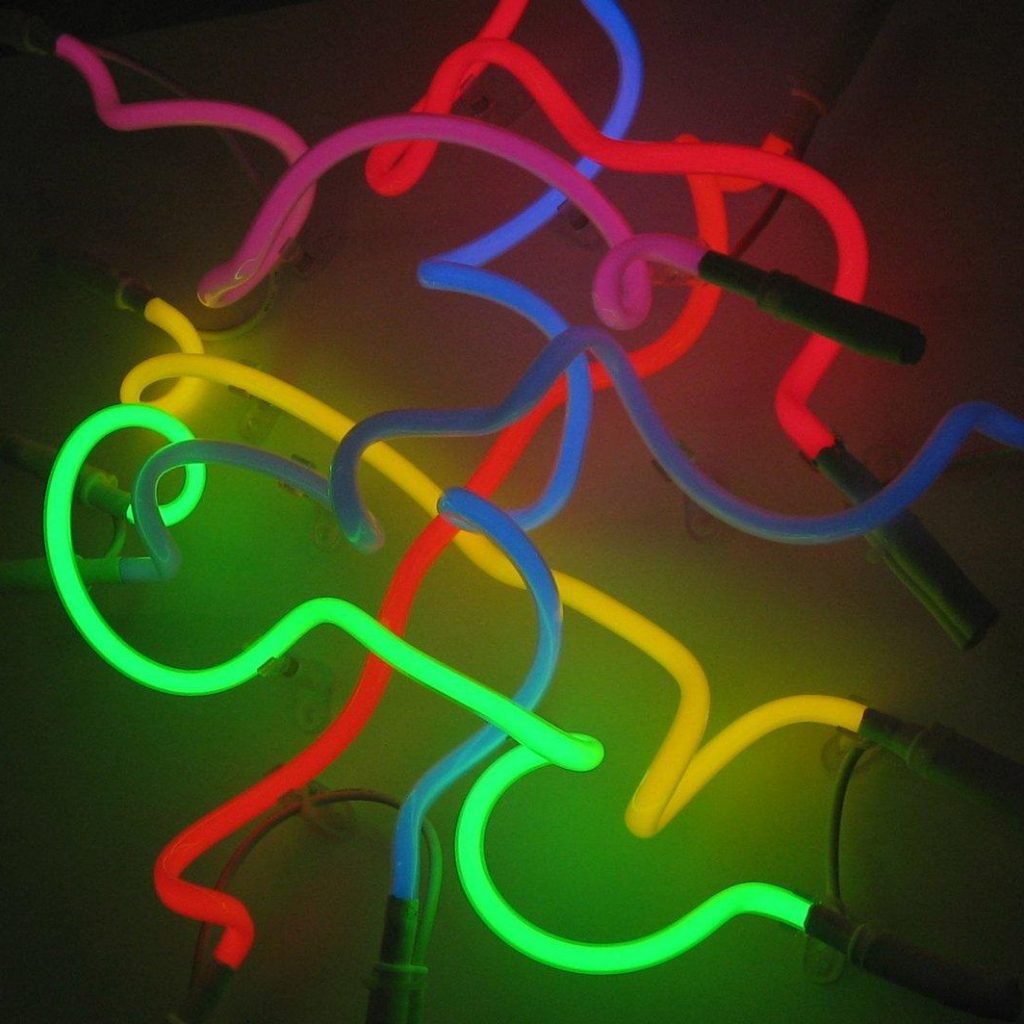
- Although neon lights have always been around for quite some time, they have only recently begun to play a significant role in the aesthetics of urban streets.
- No longer just a novelty found in arcades and nightclubs, neon signs are now a common component of contemporary architecture and a sought-after element in the design of private and public spaces alike.
- Neon signs, which have been used since the early 20th century, have changed in style and colour to reflect the aesthetic preferences of urbanites in the West.
- Neon sign technology has been available for centuries, however neon signs have only been employed commercially during the last century.
- Neon signs are used as a decorative and bold type of advertising everywhere from hipster cafes and bars to edgy retail stores.
- Let's take a deep dive into the past of neon signs and learn about their beginnings, evolution, and potential future.
- The fields of architecture and interior design, as well as other areas of life, each make use of a variety of customized led sign types.
- These include neon logos, neon artwork, neon signs, neon clothes, and neon furniture.
- Five years later, in 1923, Georges Claude brought the first neon gas signage to the United States, where his company soon established itself as the industry standard.
- When neon signs were first mass-produced in the 1920s, they quickly became a hit with advertisers, merchants, and consumers, and soon cities all across the United States and other parts of the world were aglow with neon.
- The iconic neon sign for Camel cigarettes, which blasted smoke rings out onto Broadway, is a significant example of the use of neon signs in advertising throughout history.
- Neon gas is considered to be an "inert" gas, and only very little amounts of it are contained inside the glass tubes that make up neon lights.
- In fact, inert gases, often known as "noble" gases, such argon, helium, xenon, and krypton, can be used in neon signs in addition to the more common noble gases like neon and xenon.
- Due to the fact that it is frequently necessary to complete the work by hand, the process of making neon signs might be considered to be rather hazardous.
- Assuming that you maintain them well-maintained and run them in the appropriate manner, the short answer to the question of whether or not it is safe to use neon signs is that they are safe to use.
- Contemporary neon signs are safer than they've ever been.
- In spite of the widespread belief that they are dangerous, the gases contained inside neon lights are in fact harmless because they are the same gases that naturally exist in the environment and that humans already breathe.
- Creating true and authentic nostalgia for the 1940s or 1950s is one convincing reason for using real neon signs rather than their popular counterparts today and even in the future.
FAQs About Neon Lights and Signs
While the average lifespan of a neon sign is eight to fifteen years, many of them last much longer than that. A sign's lifespan can be shortened by leaving it on for extended periods of time, and it also increases the risk of overheating and electrical surge damage.
Neon signs, which were common from the 1920s to the 1960s and again in the 1980s, require them to create the bright, eye-catching displays of colour that are their hallmark.
The neon glass tubes in the metal conduits are linked together by high-voltage electrical wires. When temperatures get too high, the wires powering the sign can melt, rendering it useless in whole or in part.
Believe it or not, no electricity is required here, despite the fact that many people think they must plug it in. When excited by either electricity or ultraviolet light, gas molecules release electrons, causing the gas to glow.
Neon signs are stunning to behold, but they pose a danger if they aren't regularly serviced. Injury from shattered glass, electric shock, or a fire hazard are all examples of the dangers that could arise.

